 |
01:15:2007:
Alice Coltrane R.I.P.

Alice
Coltrane passed on last weekend at the age of 69 as
she was becoming a more vital part of our listening experience and
overall musical consciousness than at any point in her prolific
career. A top notch musician, improviser, composer, and, most of
all, bandleader, striving for musical and spiritual universality,
her work stands taller than ever because of its uncompromising originality,
emotional intensity, supreme quality, and, moreover, timelessness.
Alice Coltrane
isn’t only such a huge force of the Twenty-first century listening
experience because her art transcends time and place and remains
contemporary, but it hasn’t hurt her notoriety and legacy
that, in recent years, she began performing publicly once again,
made a comeback record, and had all of her albums reissued. Finally,
renewed interest in her work lies not only within the new age, avant,
and jazz realms, but also, for example, a few sub-genres within
the new weird eclectic indie rock underworld.
In a world
where aging artists tend to either stagnate or stink fairly quickly,
with few examples to provide hope for even a shred of vitality in
the late period of musical careers, Coltrane’s 2004 comeback,
Translinear Light, is one of the best jazz albums of this
young century. Continuing where she left off a twenty-five years
before, her unmistakable style of mystical blues retained all of
its past integrity without turning its cheek to the present. Her
playing was as powerful as ever and, though it was not means her
best or most perfect record, it included a few numbers that could
easily be placed beside her classic works from the late 1960s to
the late 1970s.
Because
of my extreme, to the point of irrational, impatience for most things
new age, particularly in the sonic realm, particularly bells, harps,
and other tinkly tones, Alice Coltrane was initially a hard sell.
However, the lack of pretension, creativity, and excellence of her
compositions, arrangements, and performances hooked me right away.
I can’t tell how much of my acceptance has to do with the
strong blues undercurrent, the droney atonal qualities, the heavy
rhythmic and harmonic tension, strong groove, or just the exoticism
of the whole enterprise - but what opened an entire world to me
was her ability to carve out strong edges within her somewhat round
arpeggio-laden eastern-based spiritual arrangements by infusing
them with these rougher and more challenging elements.
And, for
all of her avant formalism, her entire body of solo work retains
an unusually utilitarian listenablity for an artist coming from
the 1960s free scene – suitable for waking up, going to sleep,
dressing, undressing, the light, the darkness, work, idleness, background
music, deep listening, meditation, everything…. even dancing
at times.
Alice Coltrane’s
career is also astounding for the way in which she, the widow of
one of history's top musical minds, devotedly continued down the
path where he left off but also managed to escape his shadow - carving
a distinct identity, achieving artistic greatness, and becoming
regarded one of the leading figures in male-dominated landscape
of jazz soloists, composers, and bandleaders of the early 1970s
by peers, critics, and listeners. I hope that she not only will
be more regularly included in discussions of late-Twentieth Century
feminism, jazz or music in general, but also cited as a role model
for us all.
Alice Coltrane
was well aware that she always was and always will be a significant
part of all of our universes. For entirely selfish reasons I wish
she would have physically stuck around a little longer so I could’ve
had another chance to witness her comeback. But I know she still
remains where she always was and will be.
ALICE
COLTRANE RECORD GUIDE
For those
of you who need an introduction, here’re a few of my favorite
Alice Coltrane recorded moments. This list is by no means intended
to be definitive. Click any of the bold titles to download 'em on
iTunes:
Monastic Trio (1968):

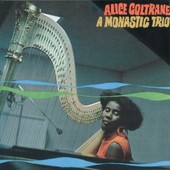 Alice
with all Coltrane alumni - Pharaoh Sanders and the super-rhythm
section of Jimmy Garrison and Rashid Ali! Some hard modal blues
played with flourishes of eastern percussion and train-loads of
feeling. Check out the muscular leadoff track
“Lord Help Me to Be” or the sparse tension
builders “I
Want to See You” or “Ohnedaruth”.
If you have any question as to whether or not she was a worthy successor
to McCoy Tyner in Trane’s band, check out her bursts of fingerbusting
on the sublime solo song “The
Sun” Alice
with all Coltrane alumni - Pharaoh Sanders and the super-rhythm
section of Jimmy Garrison and Rashid Ali! Some hard modal blues
played with flourishes of eastern percussion and train-loads of
feeling. Check out the muscular leadoff track
“Lord Help Me to Be” or the sparse tension
builders “I
Want to See You” or “Ohnedaruth”.
If you have any question as to whether or not she was a worthy successor
to McCoy Tyner in Trane’s band, check out her bursts of fingerbusting
on the sublime solo song “The
Sun”
Ptah the El Daoud (1970):

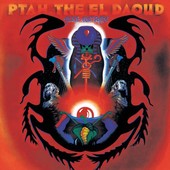 Here
Alice mellows out a bit and starts really becoming the Alice Coltrane
we know and love. A pretty perfect work consisting of four tracks
featuring an all-star cast of Ben Riley, Ron Carter, a kinder gentler
Pharaoh Sanders, and the stellar Joe Henderson. The
title track, based on an elegant swingy riff
is a fully realized contemporary jazz classic no matter how you
slice it.
"Turiya and Ramakrishna" is a top-notch
lyrical blues ballad.
“Blue Nile” is the new age confection
that may be the best song to ever feature majestic harp flourishes.
I’m not however very keen on any of the competition. But seriously,
take a second to see how it all falls together. Finally,
“Mantra” is the super adventurous
one that doesn’t swing but instead pulls itself apart by its
own edges and ties ’em together into a completely different
animal as dissonance is illuminated by random bursts of blinding
color. Here
Alice mellows out a bit and starts really becoming the Alice Coltrane
we know and love. A pretty perfect work consisting of four tracks
featuring an all-star cast of Ben Riley, Ron Carter, a kinder gentler
Pharaoh Sanders, and the stellar Joe Henderson. The
title track, based on an elegant swingy riff
is a fully realized contemporary jazz classic no matter how you
slice it.
"Turiya and Ramakrishna" is a top-notch
lyrical blues ballad.
“Blue Nile” is the new age confection
that may be the best song to ever feature majestic harp flourishes.
I’m not however very keen on any of the competition. But seriously,
take a second to see how it all falls together. Finally,
“Mantra” is the super adventurous
one that doesn’t swing but instead pulls itself apart by its
own edges and ties ’em together into a completely different
animal as dissonance is illuminated by random bursts of blinding
color.
Journey in Satchidananda (1970):

 Here
Alice Coltrane opens up a bit more space, pares her arrangements
down, drones longer, and conjures a vast South Asian mountain landscape.
Again she recruits a group of legendary figures like Pharaoh Sanders,
Charlie Haden, Cecil McBee, and Rashied Ali. There’s no shortage
of bells, oud, tamboura, and other exotic instrumentation. Coltrane’s
harp also returns, this time with less sweetness and more depth.
Again, there ain’t a dinger in the bunch. Try the ambiguous
swirl of the harp-driven
title track or
“Shiva-Loka” on for size. Recline
and relish the tiny bubbles.
“Stopover Bombay” and
"Something About John Coltrane" swing
bluesy and exotic – free and flawless.
"Isis and Osiris,” the live track,
features with some of the most virtuosic playing you’re likely
to find on any song this restrained – one of jazz’s
more distinctive masterworks. Here
Alice Coltrane opens up a bit more space, pares her arrangements
down, drones longer, and conjures a vast South Asian mountain landscape.
Again she recruits a group of legendary figures like Pharaoh Sanders,
Charlie Haden, Cecil McBee, and Rashied Ali. There’s no shortage
of bells, oud, tamboura, and other exotic instrumentation. Coltrane’s
harp also returns, this time with less sweetness and more depth.
Again, there ain’t a dinger in the bunch. Try the ambiguous
swirl of the harp-driven
title track or
“Shiva-Loka” on for size. Recline
and relish the tiny bubbles.
“Stopover Bombay” and
"Something About John Coltrane" swing
bluesy and exotic – free and flawless.
"Isis and Osiris,” the live track,
features with some of the most virtuosic playing you’re likely
to find on any song this restrained – one of jazz’s
more distinctive masterworks.
Universal Consciousness (1971):

 Many
regard this her best album and most articulate statement. I haven’t
given it enough of my time, but am ready for another go. This one’s
continues the slow restrained path of her musical development with
more formality than ever. Much of the stylized elements come from
arrangements by none other than Ornette Coleman. Jimmy Garrison
and the incomparable Rashid Ali appear once more and Jack DeJohnette
also drums sometimes and Leroy Jenkins plays violin. While less
dissonant than most free or avant jazz, for me this is most difficult
of Coltrane’s catalog – perhaps because of the slow
tense tempo and uncomfortable harmonic structures… or its
lack of bluesyness. Nonetheless, the exquisite
title track is unlike anything my ears have
ever witnessed and the other ones are beginning to grow on me. Many
regard this her best album and most articulate statement. I haven’t
given it enough of my time, but am ready for another go. This one’s
continues the slow restrained path of her musical development with
more formality than ever. Much of the stylized elements come from
arrangements by none other than Ornette Coleman. Jimmy Garrison
and the incomparable Rashid Ali appear once more and Jack DeJohnette
also drums sometimes and Leroy Jenkins plays violin. While less
dissonant than most free or avant jazz, for me this is most difficult
of Coltrane’s catalog – perhaps because of the slow
tense tempo and uncomfortable harmonic structures… or its
lack of bluesyness. Nonetheless, the exquisite
title track is unlike anything my ears have
ever witnessed and the other ones are beginning to grow on me.
World Galaxy (1971):

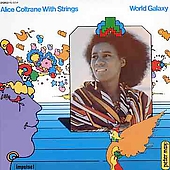 If
anything here it's cool to hear Alice Coltrane interpret two of
her husband’s signature tracks
“My Favorite Things” and
“A Love Supreme” with a spiritually
faithful, yet musically unique approach – sneaking up and
swinging the heck out of both of ‘em on a couple of my favorite
organ solos of her entire career. Beautiful bookends that stand
both on their own and as an homage to John Coltrane. If
anything here it's cool to hear Alice Coltrane interpret two of
her husband’s signature tracks
“My Favorite Things” and
“A Love Supreme” with a spiritually
faithful, yet musically unique approach – sneaking up and
swinging the heck out of both of ‘em on a couple of my favorite
organ solos of her entire career. Beautiful bookends that stand
both on their own and as an homage to John Coltrane.
Transcendence (1977):

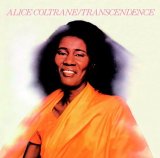 One
of her Warner Brothers records. Not my favorite but undeniable integrity.
I’m listing it here because of her super funky Rhodes work
on the laid back groove-fest,
"Ghana Nila.” This is her most
danceable moment. One
of her Warner Brothers records. Not my favorite but undeniable integrity.
I’m listing it here because of her super funky Rhodes work
on the laid back groove-fest,
"Ghana Nila.” This is her most
danceable moment.
Transfiguration (1978):

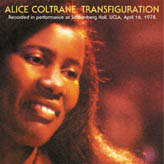 A
live 1976 recording that is particularly appealing because you get
to hear Alice Coltrane harpless and leading a trio backed by the
outstanding rhythm section of Reggie Workman and Roy Haynes. Not
a wasted second - a showcase of her versatility, virtuosity, and
improvisational power. The highlight, one of the peaks of her entire
recorded body of work is an epic take on John Coltrane’s "Leo"
divided into
parts one and
two – in which the twelve tones, each
representing a different zodiac sign, play off one another for more
than a half-hour – and it keeps going way past the point in
which every musical device has been exhausted. If you can open up
to it you’ll be rewarded with an elaborate sonic story and,
if you can’t, I still admire you for trying. A
live 1976 recording that is particularly appealing because you get
to hear Alice Coltrane harpless and leading a trio backed by the
outstanding rhythm section of Reggie Workman and Roy Haynes. Not
a wasted second - a showcase of her versatility, virtuosity, and
improvisational power. The highlight, one of the peaks of her entire
recorded body of work is an epic take on John Coltrane’s "Leo"
divided into
parts one and
two – in which the twelve tones, each
representing a different zodiac sign, play off one another for more
than a half-hour – and it keeps going way past the point in
which every musical device has been exhausted. If you can open up
to it you’ll be rewarded with an elaborate sonic story and,
if you can’t, I still admire you for trying.
Translinear Light (2004):

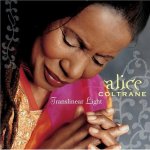 Alice’s
big comeback, produced by her son Ravi and including Oran’s
sax as well, features AC alumni from her golden age like Charlie
Haden and Jack DeJohnette. A little souvenir of everywhere she’s
visited along the way can be found here, along with some new additions
such as some occasional fusion-ish playing and contemporary production
techniques. Recommended cuts include the chant
“Satya Sai Isha,” an unusual rendering
of
“This Train” in which the bass
keeps much of the melody, and a sparse beauty entitled
“Triloka” in which she masterfully
conjures a deep and varied piano meditation above a serious dose
of the magnificent Mr. Haden. Her return to
“Leo” is the most fire you’ll
find here and my favorite cut – particularly because of her
interplay with Ravi – who here proves himself his father’s
son. Alice’s
big comeback, produced by her son Ravi and including Oran’s
sax as well, features AC alumni from her golden age like Charlie
Haden and Jack DeJohnette. A little souvenir of everywhere she’s
visited along the way can be found here, along with some new additions
such as some occasional fusion-ish playing and contemporary production
techniques. Recommended cuts include the chant
“Satya Sai Isha,” an unusual rendering
of
“This Train” in which the bass
keeps much of the melody, and a sparse beauty entitled
“Triloka” in which she masterfully
conjures a deep and varied piano meditation above a serious dose
of the magnificent Mr. Haden. Her return to
“Leo” is the most fire you’ll
find here and my favorite cut – particularly because of her
interplay with Ravi – who here proves himself his father’s
son.
ALICE
COLTRANE ON THE WEB
Alice
Coltrane's official site
New
York Times Alice Coltrane Obit
Impulse! Records Alice
Coltrane page
Alice
Coltrane on Wikipedia
Alice
Coltrane at Allmusic.com
Alice
Coltrane at Allaboutjazz.com
Sri
Sathya Sai Baba
Sai
Anantam Ashram
John
Coltrane
Ravi
Coltrane
NYNT
NEWS ARCHIVE
|
 |


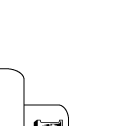




 Alice
with all Coltrane alumni - Pharaoh Sanders and the super-rhythm
section of Jimmy Garrison and Rashid Ali! Some hard modal blues
played with flourishes of eastern percussion and train-loads of
feeling. Check out the muscular leadoff track
Alice
with all Coltrane alumni - Pharaoh Sanders and the super-rhythm
section of Jimmy Garrison and Rashid Ali! Some hard modal blues
played with flourishes of eastern percussion and train-loads of
feeling. Check out the muscular leadoff track  Here
Alice mellows out a bit and starts really becoming the Alice Coltrane
we know and love. A pretty perfect work consisting of four tracks
featuring an all-star cast of Ben Riley, Ron Carter, a kinder gentler
Pharaoh Sanders, and the stellar Joe Henderson. The
Here
Alice mellows out a bit and starts really becoming the Alice Coltrane
we know and love. A pretty perfect work consisting of four tracks
featuring an all-star cast of Ben Riley, Ron Carter, a kinder gentler
Pharaoh Sanders, and the stellar Joe Henderson. The  Here
Alice Coltrane opens up a bit more space, pares her arrangements
down, drones longer, and conjures a vast South Asian mountain landscape.
Again she recruits a group of legendary figures like Pharaoh Sanders,
Charlie Haden, Cecil McBee, and Rashied Ali. There’s no shortage
of bells, oud, tamboura, and other exotic instrumentation. Coltrane’s
harp also returns, this time with less sweetness and more depth.
Again, there ain’t a dinger in the bunch. Try the ambiguous
swirl of the harp-driven
Here
Alice Coltrane opens up a bit more space, pares her arrangements
down, drones longer, and conjures a vast South Asian mountain landscape.
Again she recruits a group of legendary figures like Pharaoh Sanders,
Charlie Haden, Cecil McBee, and Rashied Ali. There’s no shortage
of bells, oud, tamboura, and other exotic instrumentation. Coltrane’s
harp also returns, this time with less sweetness and more depth.
Again, there ain’t a dinger in the bunch. Try the ambiguous
swirl of the harp-driven Many
regard this her best album and most articulate statement. I haven’t
given it enough of my time, but am ready for another go. This one’s
continues the slow restrained path of her musical development with
more formality than ever. Much of the stylized elements come from
arrangements by none other than Ornette Coleman. Jimmy Garrison
and the incomparable Rashid Ali appear once more and Jack DeJohnette
also drums sometimes and Leroy Jenkins plays violin. While less
dissonant than most free or avant jazz, for me this is most difficult
of Coltrane’s catalog – perhaps because of the slow
tense tempo and uncomfortable harmonic structures… or its
lack of bluesyness. Nonetheless, the exquisite
Many
regard this her best album and most articulate statement. I haven’t
given it enough of my time, but am ready for another go. This one’s
continues the slow restrained path of her musical development with
more formality than ever. Much of the stylized elements come from
arrangements by none other than Ornette Coleman. Jimmy Garrison
and the incomparable Rashid Ali appear once more and Jack DeJohnette
also drums sometimes and Leroy Jenkins plays violin. While less
dissonant than most free or avant jazz, for me this is most difficult
of Coltrane’s catalog – perhaps because of the slow
tense tempo and uncomfortable harmonic structures… or its
lack of bluesyness. Nonetheless, the exquisite If
anything here it's cool to hear Alice Coltrane interpret two of
her husband’s signature tracks
If
anything here it's cool to hear Alice Coltrane interpret two of
her husband’s signature tracks  One
of her Warner Brothers records. Not my favorite but undeniable integrity.
I’m listing it here because of her super funky Rhodes work
on the laid back groove-fest,
One
of her Warner Brothers records. Not my favorite but undeniable integrity.
I’m listing it here because of her super funky Rhodes work
on the laid back groove-fest,  A
live 1976 recording that is particularly appealing because you get
to hear Alice Coltrane harpless and leading a trio backed by the
outstanding rhythm section of Reggie Workman and Roy Haynes. Not
a wasted second - a showcase of her versatility, virtuosity, and
improvisational power. The highlight, one of the peaks of her entire
recorded body of work is an epic take on John Coltrane’s "Leo"
divided into
A
live 1976 recording that is particularly appealing because you get
to hear Alice Coltrane harpless and leading a trio backed by the
outstanding rhythm section of Reggie Workman and Roy Haynes. Not
a wasted second - a showcase of her versatility, virtuosity, and
improvisational power. The highlight, one of the peaks of her entire
recorded body of work is an epic take on John Coltrane’s "Leo"
divided into  Alice’s
big comeback, produced by her son Ravi and including Oran’s
sax as well, features AC alumni from her golden age like Charlie
Haden and Jack DeJohnette. A little souvenir of everywhere she’s
visited along the way can be found here, along with some new additions
such as some occasional fusion-ish playing and contemporary production
techniques. Recommended cuts include the chant
Alice’s
big comeback, produced by her son Ravi and including Oran’s
sax as well, features AC alumni from her golden age like Charlie
Haden and Jack DeJohnette. A little souvenir of everywhere she’s
visited along the way can be found here, along with some new additions
such as some occasional fusion-ish playing and contemporary production
techniques. Recommended cuts include the chant